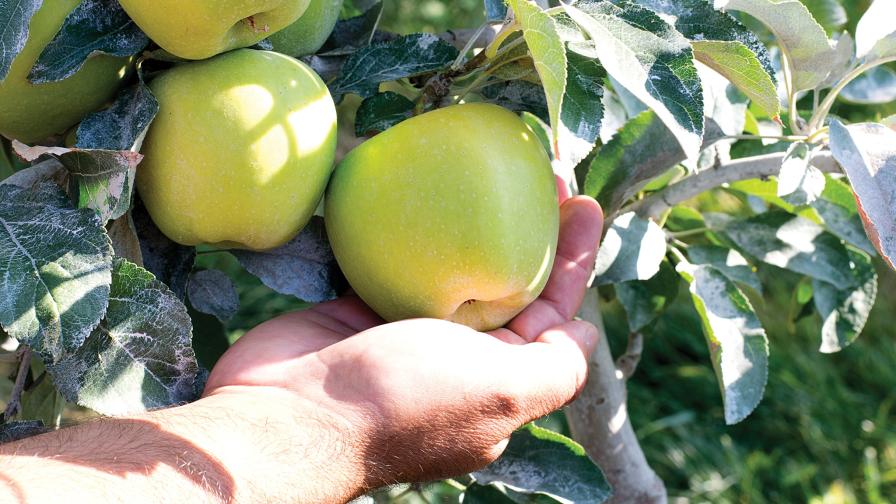10 Things To Avoid During Transplant Production
Healthy transplants lead to healthy crops, and ultimately a healthy bottom line. To produce high-quality transplants, they must be cared for properly. Here are some pointers on what to avoid.
1. Use Of Poor Quality Seed
We all know the statement “garbage in, garbage out” used routinely in computer science. That is also true in transplant production: “poor seed in poor transplants out,” and eventually poor crop. The seed is probably the most critical component of transplant production and growers should use pest-free seeds from known sources and certified for cultivar and germination. If using leftover seed from a previous season, growers should always conduct a germination test early enough to allow for plan B in case of poor germination.
2. Reuse Transplant Trays Without Appropriate Disinfestation
It is recommended to use new trays for each transplant set. However, if for economic or other reasons it is necessary to reuse the trays, it is critical to sanitize them prior to reuse. Disease-infested trays can ruin an entire transplant production facility.
3. Use An Unsanitized Growing Environment
Proper greenhouse sanitation is key for transplant production. Dirty benches, transplant materials, and standing water may spread diseases and insects. Also, the presence of weeds may serve as refuge and bridge for major pests and diseases.
4. Inappropriate Scheduling
Knowing when to start the seed so that transplants are ready at the appropriate time is critical since transplant age may have significant impacts on their performance. The time required to grow a crop for field transplanting varies widely, about three or four weeks (most cucurbits), five to seven weeks (tomato, broccoli, cabbage, lettuce), six to eight weeks (pepper, eggplant), and 10 to 12 weeks (celery, onion). Holding transplants for a couple of days after they are ready may not be a major problem. However, transplanting seedlings when they are too young will delay harvest and in some cases defeat the need for using transplants instead of direct seeding.
5. High Density Planting
Transplant trays with large cells hold more media, water, and nutrients and maintain lower relative humidity, which is critical for avoiding the spread of diseases. The optimum density depends on the crop species and the duration of transplant growth.
6. Poor Lighting Conditions
Transplants grown under insufficient light conditions tend to be leggy and prone to wilting. In most greenhouse facilities, supplemental lighting is required for good quality transplant production.
7. Poor Ventilation And Temperature Management
Relative humidity increases rapidly with poor ventilation and may result in significant losses caused by diseases. Proper ventilation may also reduce spikes in greenhouse temperature on sunny days. Each crop has a specific temperature requirement and thermometers should be used to monitor temperatures in the growing facility. In some cases supplemental heating may be necessary.
8. Inappropriate Nutrient Management
Fertilizer rate and timing of application in transplant production vary with the crop and the growing medium used. Too little fertilizer will stunt the transplant and too much will produce transplants that are too succulent and usually fail to resist tough field conditions upon transplanting. Keep in mind that a good-looking transplant resulting from too much nitrogen application may not always translate to a high-quality transplant when it comes to resilience to field conditions.
9. Poor Water Management
A common mistake is for growers to overwater transplants. Overwatering enhances nutrient leaching, creates high relative humidity that is conducive to disease development, especially damping-off, and promotes the growth of fungus gnats. Lack of uniformity in watering may also result in transplants with differing growth stages in the same tray. On sunny and hot days, water in the irrigation tubing may get extremely hot and kill transplants. Therefore, it is always good practice to flush hot water from the line before watering the transplants.
10. Transplant Shock
Transplant shock is the stress that occurs when transplants are moved directly to the field without appropriate “hardening.” Hardening improves transplant resilience by reducing its growth rate, thickening the cuticle, increasing tissue dry matter content which reduces the amount of freezable water, and increasing the amount of anthocyanins (pink pigments) in the shoot. These physiological and biochemical changes improve adaptability of the transplants to extreme weather conditions, like cool or hot temperature, water stress, high winds, direct sun exposure, and nutrient stress. For vegetables like cabbage, tomato, lettuce, and eggplant, the development of a pink color in the stem, petioles, and veins is a good indication that the transplants are ready to withstand adverse field conditions.









